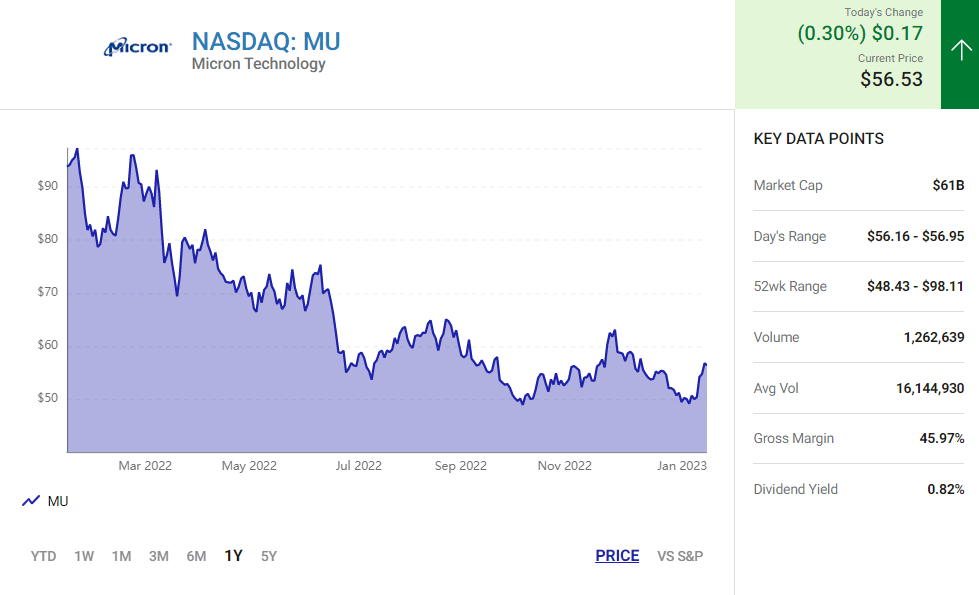The market leader isn’t slowing down as the memory chip market worsens.
The memory chip markets are in severe oversupply, the worst imbalance since the financial crisis. The entire supply chain is drowning in inventory, and some manufacturers are aggressively cutting production and slowing down capital spending plans in efforts bring the situation back under control.
One of those manufacturers pulling back is Micron (MU 0.30%). The company expects capital expenditures related to wafer fab equipment to plunge more than 50% year over year in fiscal 2023, with the number falling further in fiscal 2024. Micron has also reduced wafer starts by around 20%, enacted major cost cuts, and is slowing the production ramp of new process nodes.
Micron isn’t doing this in a vacuum. Some other manufacturers are taking similar measures, but it only takes one to spoil things. That spoiler this time around appears to be market leader Samsung (SSNL.F -28.17%).

No plans to pull back
Samsung is the world’s largest producer of DRAM and NAND memory chips, and it’s suffering just as much as other manufacturers as demand and prices plunge. The company warned last week that its fourth-quarter profits would plunge as memory chip markets struggled. Samsung expects to report consolidated operating profit of roughly 4.3 trillion Korean won, down from 13.9 trillion Korean won in the prior-year period.
There has been no indication that Samsung is cutting back on production or capital spending plans. In October, the company said that its supply of memory chips would grow faster than peers as it continued to follow its previous investment plans. Samsung will begin mass producing DRAM on its new 12nm process node in 2023, and unlike Micron, it doesn’t appear to be slowing any plans for future migrations.
DigiTimes reported in late December that Samsung was likely to initiate big price cuts on its memory chips in 2023 in an effort to gain market share. The company is already being more aggressive on pricing than its peers. DRAMeXchange reported on Monday that Samsung was the only major DRAM supplier to see a slight drop in its inventory levels because of its pricing strategy.
Samsung could change course as its profits fall off a cliff, but if the company sticks with its plans, the memory chip downturn could drag on for quite a while. DRAMeXchange expects overall per-bit DRAM prices to drop between 13% and 18% sequentially in the first quarter of 2023, with production cuts from Micron and others not nearly enough to prevent a double-digit decline.
Samsung is playing the long game
Moving to more advanced process nodes is one way memory chip manufacturers lower per-bit costs. That’s critical, because per-bit memory chip prices generally fall over time.
Micron slowing its process node transitions will help save cash now, but it could put the company at a disadvantage once the memory chip markets recover. If Samsung follows through on its plans without significant cuts or slowdowns in 2023, it will certainly benefit the company in the long run. Once the inventory glut is resolved and demand recovers, not only will Samsung have the capacity to meet that demand, but it will likely be able to do so at a lower cost-per-bit compared to its competitors.
Samsung will report its full fourth-quarter results on Jan. 31. If the company sticks with its capital spending and production plans despite plunging profits, it will all but guarantee a deep and long downturn in the memory chip markets and a rough 2023 for Micron.
Source: fool.com

